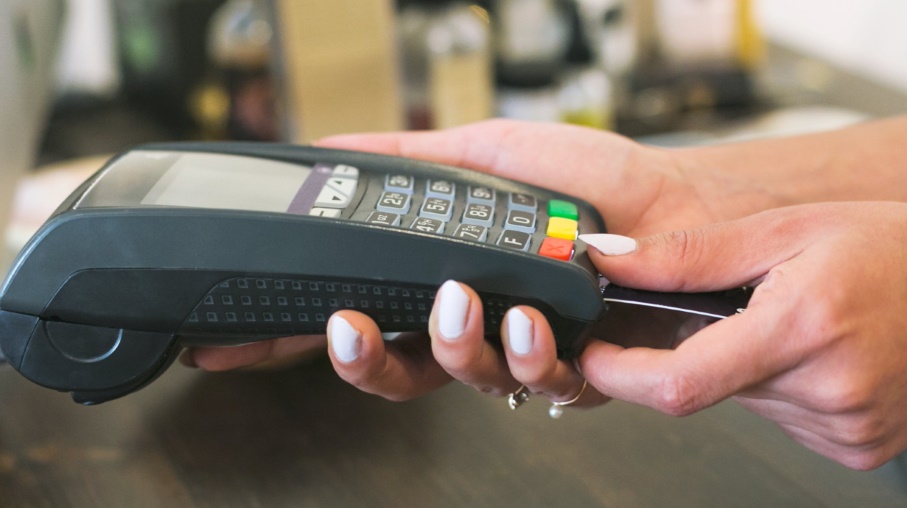Customer Highlight – Mill Creek Chocolates
In today’s article, we’re showcasing our customer, Mill Creek Chocolates: a manufacturer and retailer of fine gourmet chocolates. When we met Jodie Lofts, Special Projects Manager for Mill Creek Chocolates, she was struggling to manage a manufacturing facility, a warehouse and three stores – all using “pencil and paper” to account for sales and control inventory. Jodie decided to deploy MyPOS Connect, first in the manufacturing facility then later in the warehouse and stores. Her journey through the process of single-handedly converting the entire operation from a manual system to an automated Retail Management Point of Sale System, all while continuing to manage the business, is truly impressive.
Following is a series of responses to questions we asked Jodie about a year after we helped her deploy MyPOS Connect throughout her entire operation.
Tri-City: How long have you been in business and what is your company’s mission?
Jodie: Mill Creek Chocolates has been in business since 1997. Back then, generic big box stores were opening on every corner. So it was our desire to create a luxurious, personal shopping experience for all of our customers by offering the most decadent handmade chocolates presented in beautiful boxes, wraps and ribbons. Every facet of Mill Creek Chocolates has one goal: for our customers to love us.
Tri-City: Tell us how your business grew to the size it is today and what challenges force you to look for a new Point Of Sale system.
Jodie: We started with one store in Port Elgin. Not long after, a second store opened in Owen Sound. Inventory was stored in the Port Elgin location and shipped to Owen Sound, as required. This worked for a number of years because their stock could easily be seen “at a glance” in the storage room in the Port Elgin store. Then about 3 years ago, we opened our third location in Kincardine, which presented new problems because all the extra stock we were making to supply the Kincardine store was still located in the Port Elgin location. So keeping track of stock levels was even more difficult and time-consuming.
Our breaking point came when we moved all of the inventory storage to a new warehouse facility, about 2 years ago. All our product was made in one location, shipped to the storage warehouse and then distributed to the three retail locations from there. While at the warehouse, the basic products were also packaged into a variety of boxed items and gift baskets. Controlling hundreds of items across four locations had become impossible.
Tri-City: What equipment/system did you use to process sales prior to using MyPOS Connect?
Jodie: Before MyPOS Connect, sales were completed on a cash register. Products were grouped into categories and the retail staff needed to know which category each item belonged to so that they could enter the sales using the right department keys on the cash register. Inventory was manually counted, almost daily, which was time-consuming and expensive. We managed to keep track of how much of each product we were making, but we didn’t know how much was going to each store or how much was being sold.
Tri-City: How has MyPOS Connect impacted your business?
Jodie: MyPOS Connect has had a huge impact on our business. Almost everything we do has been altered in some way. From implementing new bar code labels to tracking stock as it changes from a humble individual chocolate to its place in a glorious gift basket, this was an enormous undertaking. We are still refining our procedures to develop a system that works perfectly for us. With that said, I can’t imagine how we would have moved forward with pencil and paper.
Now, I can’t even imagine how we would run this business without MyPOS Connect. The average shelf life of our products is between 2 and 5 months. We can’t afford to misplace stock for any length of time. Inventory is moving daily between locations, changing from simple materials to hundreds of new products all against the proverbial time clock.
Tri-City: Once you started using MyPOS Connect, did you have to make any changes to your business or business processes that you weren’t anticipating?
Jodie: I think the keywords here are “weren’t anticipating”. I did anticipate that everything was going to change. Except for almost daily counting of stock, we didn’t keep track of very much. We were basically starting from scratch with this system. We can now track actual products. In the past, we only had sales summaries to look at. We have only just completed a full year with MyPOS Connect, but I can easily look back and see how much ‘peanut brittle’ (for example) we sold in the week before Christmas. This allows us to be better prepared; previously, we would only know that we sold $x.xx of snack-based items.
Tri-City: Before deploying MyPOS Connect, did you look at other POS solutions; what were some of the key reasons you chose MyPOS Connect over the other systems?
Jodie: Moving to a POS system was a big investment for Mill Creek Chocolates. So we looked at 7 different POS companies. The upfront cost of new POS hardware was fairly equivalent across the other companies; but as I did more research between the different POS companies, the ‘deal breaker’ became needing our own server, which I decided I could not support. With MyPOS Connect, we didn’t need to have our own server/storage; and the low monthly fee was another big selling feature.
Regarding features, all the POS solutions had nice sales screens, but we also had to be able to “see” everything, everywhere. As I watched the demonstrations from the other companies, it was the stock management that I focused on and MyPOS Connect had the strongest capabilities in that area.
Tri-City: What is your favourite feature or part of our product? Why?
Jodie: I love the reports portal. Since our staff is so new to this, I can easily help look up inventory, track product that seems to be missing, produce a report – from anywhere!
Tri-City: Have you used our customer support team? If so, do you have any feedback from your experience?
Jodie: Love! My contact is John – he is so awesome. John responds to my emails very quickly. He is always patient when updating our ever-changing ip addresses, but most of all he was a great teacher. He gave me the bare bones and said GO! Always encouraging and NEVER condescending. He guided me to learn on my own and build the confidence that I could handle this undertaking. Before working with MyPOS Connect, I didn’t know what a POS was and I had never used Excel. I had never even used a cash register unless you could count my grandpa’s corner store 35yrs ago. At no point did I ever feel that this task was too big.
Tri-City: What is your advice to others who might be considering MyPOS Connect?
Jodie: Any company that is still working with pencil and paper to keep track of inventory, and is finding it overwhelming, should consider making the leap. The level of technical expertise is minimal, and you can learn it as you go. It does take time to keep track of your inventory, but the information provided in the reports will really help define your direction.
Tri-City: How would you describe MyPOS Connect if you were explaining it to a friend?
Jodie: MyPOS Connect provides a simple way to make sales and easily keep track of all your inventory.
Tri-City: Would you recommend MyPOS Connect to a business associate?
Jodie: YES! I do so every chance I get.
If you would like to taste some of Mill Creek Chocolates’ amazing confectionary treats, go to their webstore at https://www.millcreekchocolates.ca/product-categories/


